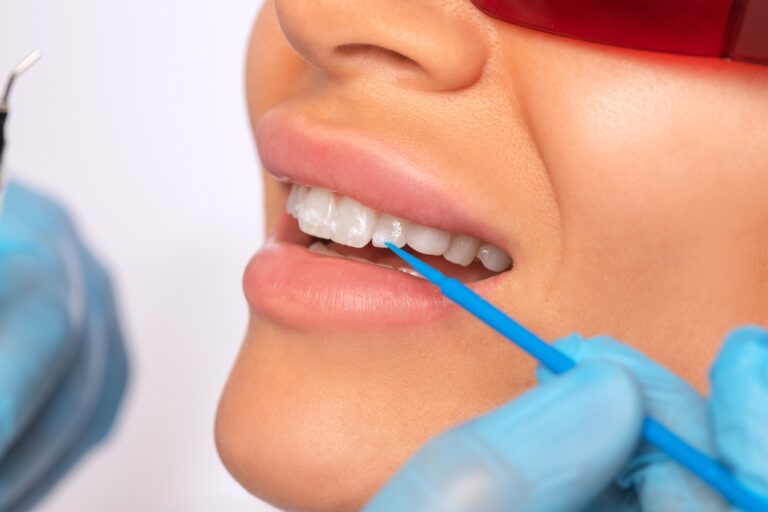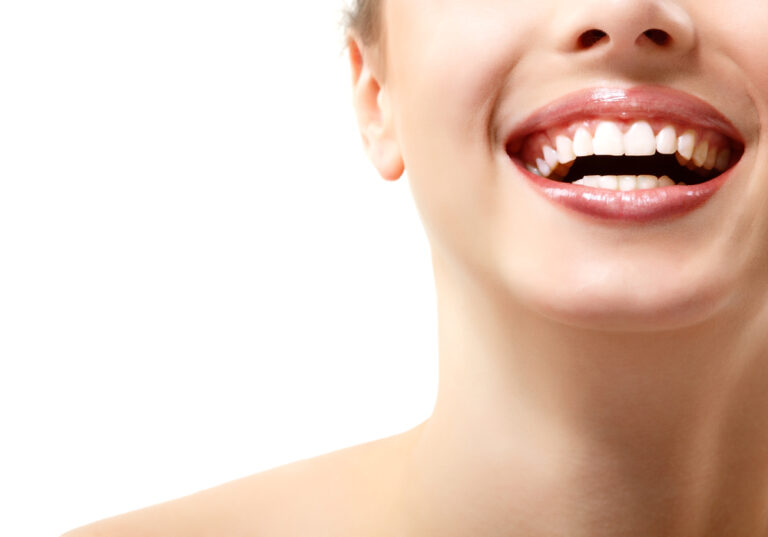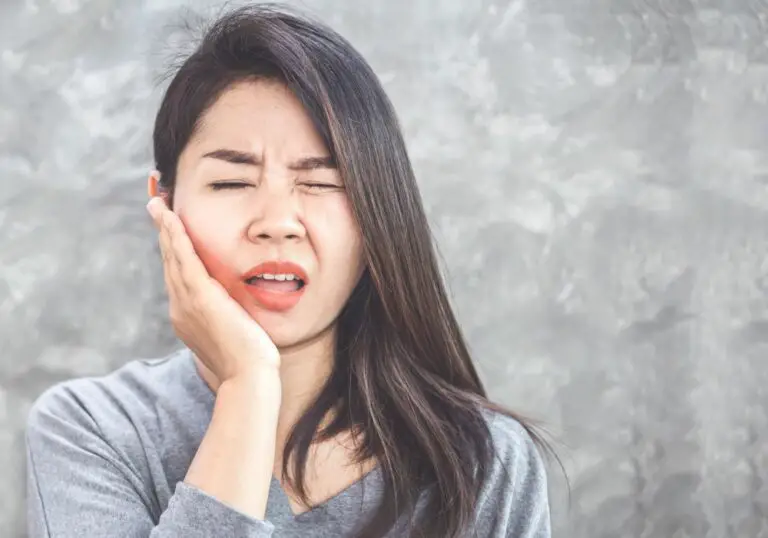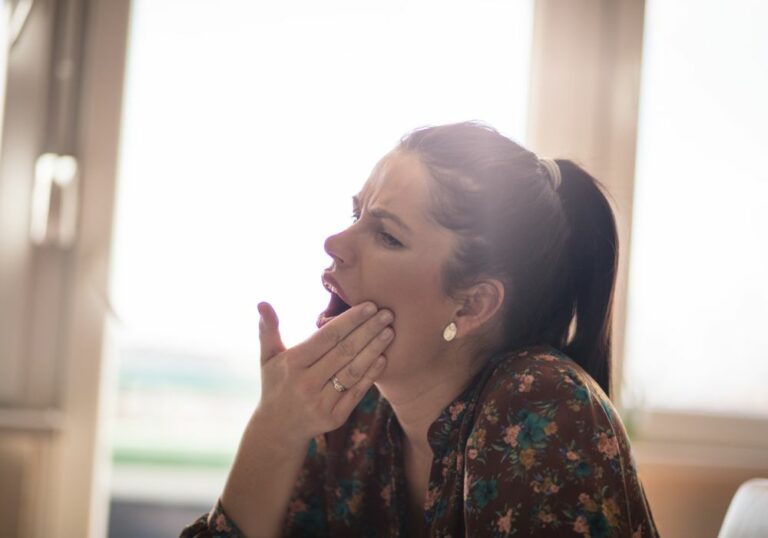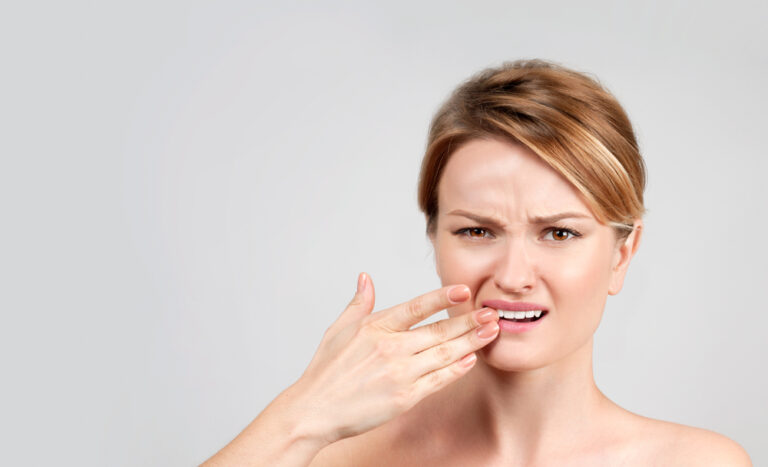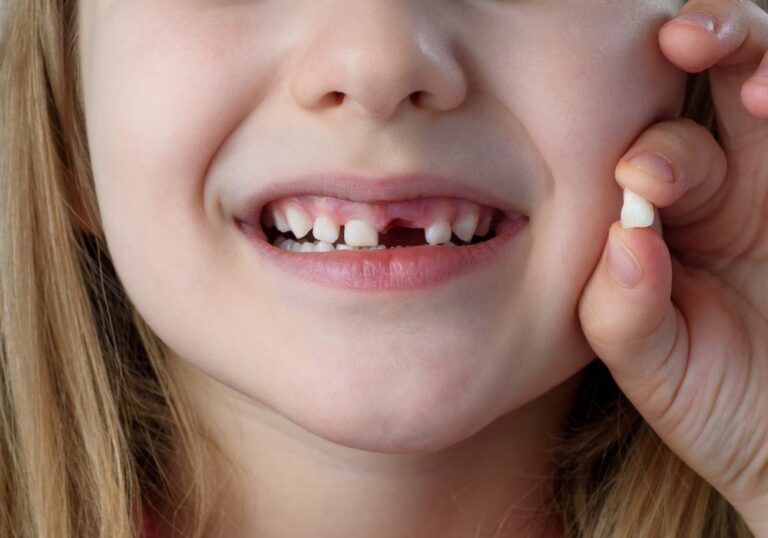Are you using teeth whitening strips but struggling with excessive saliva? It can be frustrating when saliva interferes with the effectiveness of your whitening treatment. While it’s common to produce more saliva when using these strips, excess saliva can dilute the whitening solution and cause the strips to slip off your teeth, reducing their effectiveness.
Many people wonder if using a tissue to remove saliva while using teeth whitening strips is a good idea. While it may seem like a quick fix, using a tissue to remove saliva can actually interfere with the whitening process. Tissues can absorb the whitening solution, reducing its effectiveness and potentially causing irritation to your gums. Additionally, using a tissue to remove saliva can cause the strips to move around on your teeth, reducing their contact with the surface and reducing their effectiveness.
So what can you do to deal with excessive saliva when using teeth whitening strips? There are a few tips and tricks you can try to minimize the amount of saliva in your mouth and get the most out of your whitening treatment. Keep reading to learn more about how to effectively deal with saliva while using teeth whitening strips.
Understanding Teeth Whitening Strips
Teeth whitening strips are a popular at-home teeth whitening solution. They are thin, flexible strips coated with a whitening gel that contains hydrogen peroxide or carbamide peroxide. When applied to the teeth, the gel works to remove surface stains and brighten the teeth.
Using teeth whitening strips is relatively easy. You simply apply the strips to your teeth and leave them on for the recommended amount of time, usually around 30 minutes. After the time is up, you remove the strips and discard them.
It’s important to note that teeth whitening strips are not a one-time solution. In order to see results, you will need to use the strips consistently over a period of time, usually around 2 weeks. It’s also important to follow the instructions carefully and not leave the strips on for longer than recommended, as this can cause sensitivity and irritation.
While teeth whitening strips can be effective at removing surface stains, they may not work as well on deeper, more stubborn stains. Additionally, they may not be as effective on teeth that have been discolored due to certain medications or medical conditions.
If you are considering using teeth whitening strips, it’s important to talk to your dentist first to ensure that they are safe for you to use. They can also provide guidance on which products to use and how often to use them.
Overall, teeth whitening strips can be a convenient and effective way to brighten your smile, but it’s important to use them correctly and understand their limitations.
Saliva and Teeth Whitening Strips
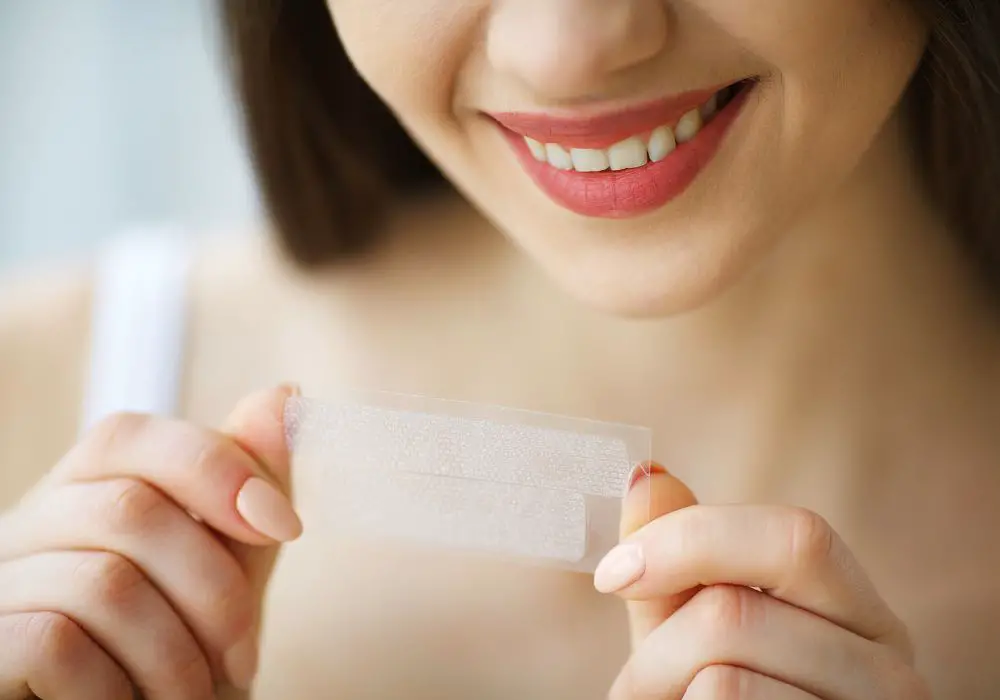
Teeth whitening strips are a popular way to brighten your smile at home. However, many people experience excess saliva while using them, which can make the process uncomfortable and less effective. In this section, we’ll explore the role of saliva in the whitening process and how it can affect your results.
Role of Saliva
Saliva is a natural substance produced by your body to help with digestion and oral health. It contains enzymes and minerals that help break down food and protect your teeth from decay. However, when you’re using teeth whitening strips, excess saliva can dilute the whitening solution and prevent it from reaching your teeth. This can result in uneven whitening and less noticeable results.
Effect of Saliva on Whitening Process
Excess saliva can also cause the whitening strips to slip or slide around in your mouth, making them less effective. If you’re constantly swallowing or spitting out saliva, you may not be able to keep the strips in place for the recommended amount of time. This can lead to uneven whitening and a less dramatic difference in the shade of your teeth.
To combat excess saliva while using teeth whitening strips, there are a few things you can try:
- Swallow before applying the strips: Make sure you clear your mouth of excess saliva before applying the strips to your teeth. This will help prevent dilution of the whitening solution and keep the strips in place.
- Use a tissue to remove excess saliva: If you’re still experiencing excess saliva, try using a tissue to gently blot it away. This can help keep the strips in place and prevent dilution of the whitening solution.
- Use a saliva-blocking product: Some companies make products specifically designed to help block excess saliva while using teeth whitening strips. These can be applied to your gums or teeth to help keep the strips in place and prevent dilution of the whitening solution.
Overall, excess saliva can be a frustrating side effect of using teeth whitening strips. However, by taking steps to prevent dilution of the whitening solution and keep the strips in place, you can still achieve a brighter, whiter smile.
Using Tissue to Remove Saliva

When using teeth whitening strips, it is common to experience excess saliva production, which can interfere with the effectiveness of the strips. One solution to this problem is to use tissue to remove saliva as needed. Here are some pros and cons of using tissue to remove saliva while using teeth whitening strips.
Pros of Using Tissue
- Tissue is readily available and easy to use. You can simply grab a tissue and hold it to your mouth to remove excess saliva as needed.
- Using tissue can help to keep your mouth dry, which can improve the effectiveness of the whitening strips. When your mouth is too wet, the strips may not adhere properly or may slide around, reducing their effectiveness.
- Tissue can also help to prevent saliva from dripping down your chin or onto your clothing, which can be unsightly and embarrassing.
Cons of Using Tissue
- Tissue may not be effective at removing all of the excess saliva in your mouth. Depending on how much saliva you produce, you may need to use multiple tissues to keep your mouth dry.
- Using tissue can be inconvenient, especially if you are on the go or do not have tissues readily available. You may need to stop what you are doing to grab a tissue, which can be frustrating.
- Tissue can also be wasteful, as you may need to use multiple tissues to keep your mouth dry. This can be a concern if you are environmentally conscious or trying to reduce your waste.
Overall, using tissue to remove saliva while using teeth whitening strips can be a convenient and effective solution to excess saliva production. However, it may not be suitable for everyone, and there are some drawbacks to consider.
Alternative Methods to Control Saliva
When using teeth whitening strips, controlling saliva can be a challenge. While some people prefer to recline on a couch or bed with their head back to prevent saliva from pooling in their mouth, others may find this uncomfortable. If you’re looking for alternative methods to control saliva, here are a few options to consider:
Swallowing Saliva Immediately
One of the simplest methods to control saliva while using teeth whitening strips is to swallow it immediately. As soon as you feel saliva pooling in your mouth, swallow it. This will help prevent it from interfering with the whitening process. While it may not be the most comfortable option, it can be effective.
Using Tissue
Another option is to use tissue to remove excess saliva. Gently dab the tissue around your mouth to absorb any excess saliva. Be careful not to rub too hard, as this can cause irritation. Remember to be gentle and to avoid touching the whitening strips.
Drinking Water
Drinking water while using teeth whitening strips can also help control saliva. Sipping water can help wash away excess saliva and keep your mouth moist. However, be careful not to drink too much water, as this can dilute the whitening gel and reduce its effectiveness.
Using a Mouthguard
If you find that saliva is a persistent problem while using teeth whitening strips, consider using a mouthguard. A mouthguard can help keep your mouth open and prevent saliva from pooling in your mouth. This can be especially helpful if you tend to produce a lot of saliva.
Conclusion
While controlling saliva can be a challenge when using teeth whitening strips, there are several alternative methods you can try. Swallowing saliva immediately, using tissue, drinking water, and using a mouthguard are all effective ways to control saliva and maximize the effectiveness of your whitening treatment.
Tips for Effective Teeth Whitening
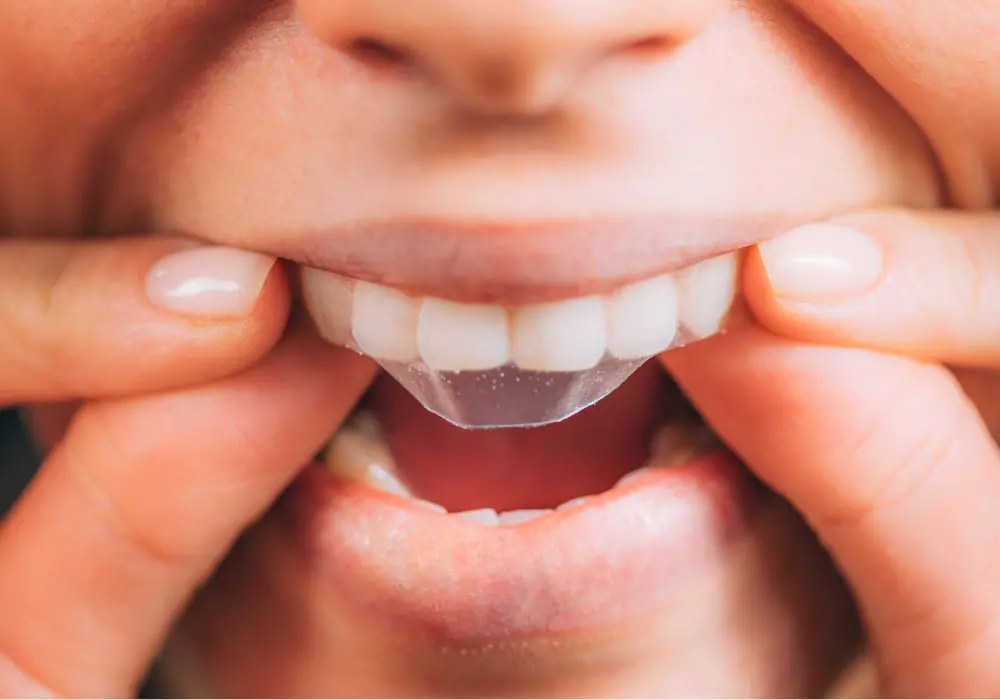
Using teeth whitening strips is one of the most popular ways to brighten your smile. Here are some tips to help you get the best results:
- Follow the instructions carefully: Make sure to read the instructions on the package and follow them closely. This will help you avoid any potential problems and ensure that you get the best results possible.
- Brush and floss before using the strips: Brush and floss your teeth before using the strips to remove any food particles or plaque that may interfere with the whitening process.
- Use tissue to remove saliva: If you experience excessive saliva while using the strips, use a tissue to remove it. This will help ensure that the strips stay in place and that the whitening agent is in contact with your teeth.
- Be patient: Teeth whitening is a gradual process, and it may take several weeks to see significant results. Don’t expect overnight miracles, and be patient with the process.
- Don’t overuse the strips: Using the strips too often can cause tooth sensitivity and damage to your enamel. Follow the recommended usage guidelines and don’t use the strips more often than recommended.
- Maintain good oral hygiene: To keep your teeth looking their best, make sure to brush and floss regularly, and visit your dentist for regular cleanings and checkups.
By following these tips, you can achieve a brighter, more confident smile with teeth whitening strips.
Frequently Asked Questions
Can I swallow saliva with teeth whitening strips on?
Yes, you can swallow your saliva while wearing teeth whitening strips. Saliva is a natural reaction to having an object in your mouth, and it helps to keep your mouth moist. However, it is recommended that you try to minimize swallowing as much as possible to prevent ingesting the whitening agent.
Can I drink water while using teeth whitening strips?
No, it is not recommended to drink water while using teeth whitening strips as it can dilute the whitening agent and reduce its effectiveness. It is best to wait until after you have removed the strips to drink water.
Can I eat immediately after using teeth whitening strips?
No, it is not recommended to eat immediately after using teeth whitening strips. It is best to wait at least 30 minutes before eating or drinking anything to allow the whitening agent to fully absorb into your teeth.
Why do teeth whitening strips taste bad?
Teeth whitening strips can taste bad because of the whitening agent used in them. The taste can be bitter or unpleasant, but it is important to keep the strips on for the recommended time to achieve the desired results.
What happens if teeth whitening strips touch my gums?
If teeth whitening strips touch your gums, it can cause irritation or sensitivity. It is important to follow the instructions carefully and apply the strips only to your teeth, avoiding contact with your gums.
How do I use teeth whitening strips without saliva?
It is difficult to use teeth whitening strips without saliva as it is a natural reaction to having an object in your mouth. However, you can try to minimize saliva production by swallowing before applying the strips and avoiding talking or moving your mouth excessively while wearing them. You can also use a tissue to gently remove excess saliva if necessary.

